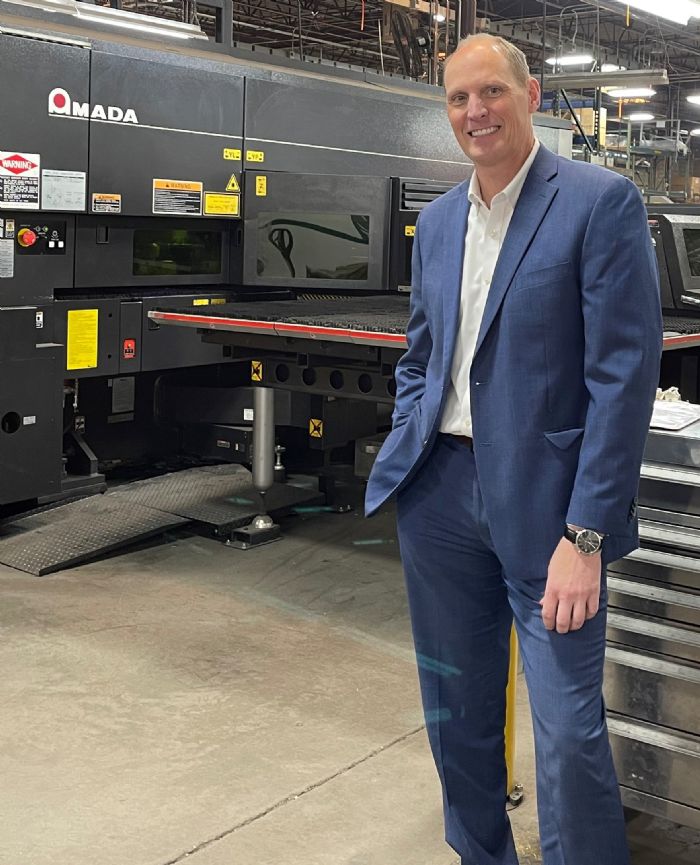We recently completed a quad analysis at Lake Air, deciding what companies to categorize as A—those we’ll service fully; and B—those that fit our niche but may not get the top-level service that we provide to the As, including more competitive pricing and quicker turnaround. We then separate those two categories to create four quads.
- Quad One—the parts that we really want, those top 20 percent of the jobs that should provide 80 percent of the revenue.
- Quad Two—the parts that we have to run because they come from the same customer ordering Quad One parts.
- Quads Three and Four—these are the B customers, Quad Three being those parts that we’re good at making that generate a decent amount of revenue without a lot of business complexity, and Quad Four being more complex parts that consume excess time and energy. We’re shedding Quad Four parts, unless we can turn them into Quad Three parts and charge more for the added complexity. At the same time, we’re striving to identify new A customers, and to convert B customers into A—all based on achieving the revenue threshold we’re seeking.
The book really addresses this topic well, including how to
get your salespeople to excel at hunting and how to present our story.
Q: What is the biggest challenge you face as a company leader?
Kemper: This past year brought many challenges in a short period of time, chief among them a lack of reliable forecasting, the changing economy, lack of available talent and managing through large fluctuations in business. Excluding the pandemic, the more common challenges relate to finding balance between three principles:
- Business mission: Defining our customer and market focus.
- Business identity: Establishing our organization’s culture and ensuring that employees remain aligned to the company’s strategies.
- Business stewardship: Maintaining a prosperous position for
stability and growth.
Forecasting was most critical. For all of our key customers, we initiated weekly, and sometimes daily, oversight. We looked at their history and watched their forecasts and order levels very closely. One customer, for example, which typically averaged 95 to 98-percent accurate to forecast, and sometimes 100-percent, suddenly due to COVID-19 dropped to 67-percent. We saw this weekly on its electronic-data-interchange orders, so now we can go back, knowing that their order levels are too high, and more accurately predict what they’ll actually do, and then plan resources accordingly, materials etc.…vs. chasing our tail and all of a sudden having to push orders out. So—diligent reforecasting on our part, based on the actual histories of our customers.
We’ve kept his going as a tool, applying it weekly for all of our A customers, and it’s helped us make the right business adjustments. And, it taught us to be quicker reactors, how to manage in a fast-paced and changing environment.
Q: What are two or three of the most important things you look for in a mid-level manager?
Kemper: I can think of three right off the bat:
- Personal drive or passion to achieve.
- Willingness to improve. Having the humility to know that
everyone can improve, every day.
- Demonstrated ability and skill to develop people to higher levels of achievement.
I’ve been preaching to the management team to understand the commitment to stewardship—ensure that when we’re making commitments to our customers, we’re doing it with a good understanding of what’s needed for our own business stability and growth. My motto during this last year was, “It’s game day. You guys are play-calling.” That allowed the team members to come to understand why we’re doing what we’re doing, staying focused on the A customers and building and following weekly, monthly and quarterly objectives.
When we’re recruiting and I’m evaluating resumes, I look for people that can state what they’ve accomplished and the results. Don’t rehash your responsibilities; I want to know your accomplishments. Then, I want to know your thought process—how do you identify opportunities, develop proposals and execute? Then I look for people that say, “I know that I can improve in certain areas, and I want to get better.” That’s a well-rounded leader.
Q: What are two things that you believe your company is doing well? What's one thing that you wish you could change?
Kemper: Two areas in which we’re excelling:
- Developing strategic customer-supplier relationships that
allow for additional business and growth.
- Speed of execution in several areas, including customer
response, use of analytics to identify issues and opportunities, and making continuous
improvements.
We’re not just a stamper or a fabricator, we’re a strategic partner in that our capabilities align with our customers’ needs. A lot of the customers we are obtaining have outgrown their supply chain, and the good news: We’re expecting to grow another 50-75 percent over the next couple of years, so we will be adding the capacity needed to grow with our customers. A lot of these customers are OEMs with more than one facility, so often we’re seeking to service those multiple facilities, and not just one or two.
Where can we improve? Like most manufacturers today, we must do a better job of developing our own team of skilled workers, to support our plans for growth. Along those lines, we recently launched a student temporary-employee program (STEP) to try to bring in family members of our employees who show an interest in manufacturing. We’ll employ them while in school (vocational school, as well as college), and help them through their schooling in the hopes that we can retain them down the road. We have 14 people enrolled now, and three from the program are working for us full-time.
Q: How do you encourage and motivate your management team?
Kemper: We look for managers that are self-motivated and passionate. Then our job is to give them the next project, the next opportunity to succeed. Give them the vision that they can continue to grow; let them know the impact that they have.
We keep an objective list—a roadmap, if you will--in front of them monthly, quarterly and annually to ensure that the management team shares common priorities, remains aligned and progresses. We then show our appreciation, when we achieve our objectives, via significant incentives—monetarily with performance-based bonuses, and by providing growth opportunities. Rather than trying to provide small bonuses to everyone, we try to reward those that are making significant accomplishments—in the office and on the production floor―and give them larger bonuses, along with well-deserved recognition and opportunities to advance.
On the floor, for example, one of our welders has begun
training to become a Certified Weld Director, and also will learn to program our
robotic welders. In another case, one of
our press brake operators really enjoys coaching, so he recently took over our press-brake
apprenticeship program.
Q: Can you provide an example of a solid management decision you made during the COVID-19 pandemic, and how it helped to address a major pandemic-related challenge?
Kemper: We agreed to be a primary provider of ventilator components, fast-tracking the production of 12 different parts at a volume of 40,000 per part over 10 weeks. While the original quote called for a lot of fabrication, we converted several parts into stampings. In three weeks, we were able to get the tooling built, produce sample parts and complete our PPAP.
The project tested us as a company, but our team rallied and got behind the project, and many offered suggestions to help us meet our deliverables. For example, early on we recognized the need to add welding capacity for the project, so we added a Trumpf laser-welding machine—flew it in from Germany and had it installed and running in less than a week. We also purchased a cobot to paint the parts, as well as two cobots to automate two press brakes.
Ultimately it turned out to be the right thing to do—for the company and the country. That project alone added 25 percent to our 2020 revenue, without negatively impacting our core customers. It re-energized our commitment to being built for speed based upon automation and continuous improvement.
Technologies: Management
 This month we invite Mike Kemper, president and CEO of Lake
Air Products, LLC, New Hope, MN, to share his insights. Lake Air Products is a
vertically integrated full-service stamping and fabrication company offering
design engineering and assembly, focused on quick turnaround work. Late in 2020 the firm acquired Performance
Welding, following on the 2019 acquisition of Dufresne Manufacturing and
Colortech Painting.
This month we invite Mike Kemper, president and CEO of Lake
Air Products, LLC, New Hope, MN, to share his insights. Lake Air Products is a
vertically integrated full-service stamping and fabrication company offering
design engineering and assembly, focused on quick turnaround work. Late in 2020 the firm acquired Performance
Welding, following on the 2019 acquisition of Dufresne Manufacturing and
Colortech Painting. 








